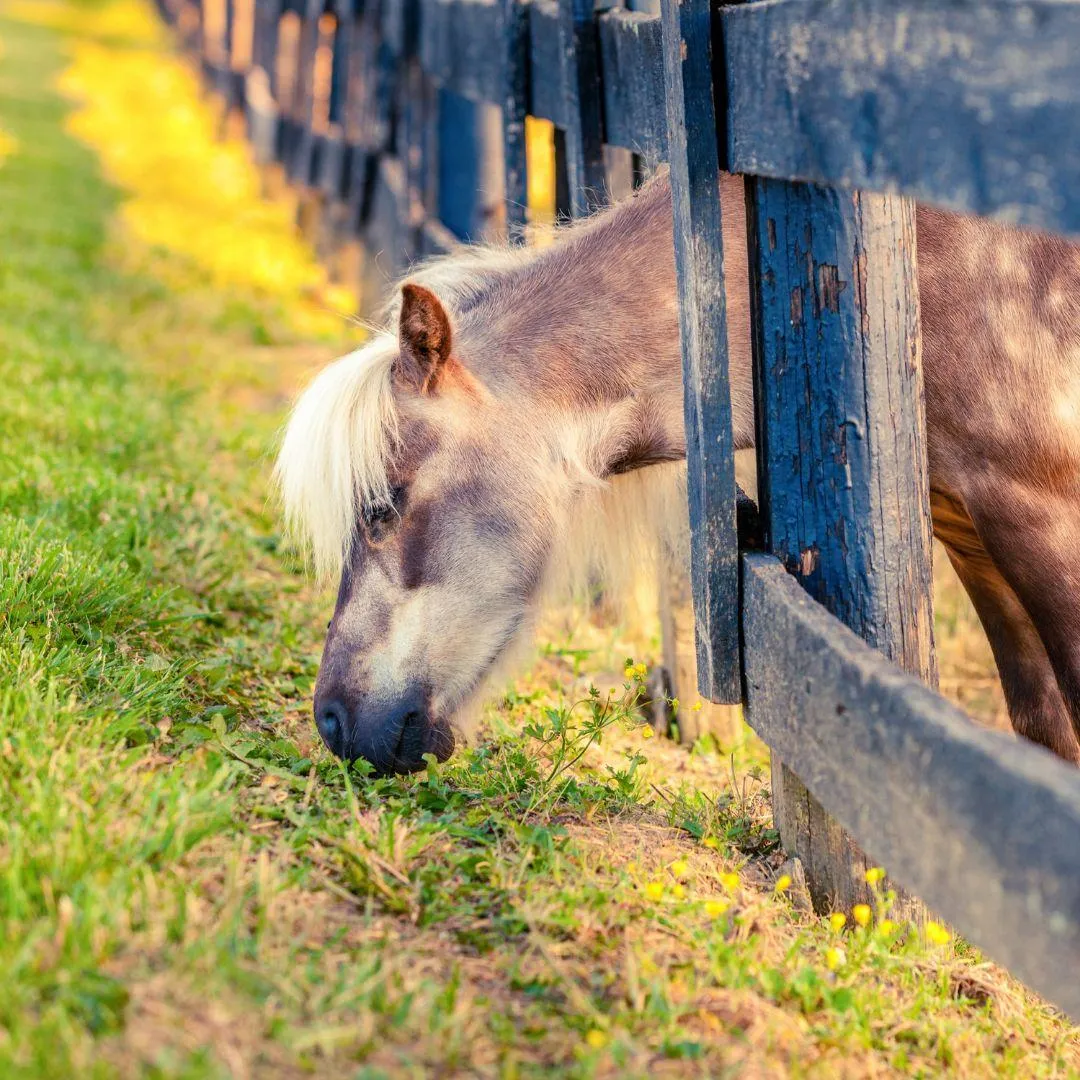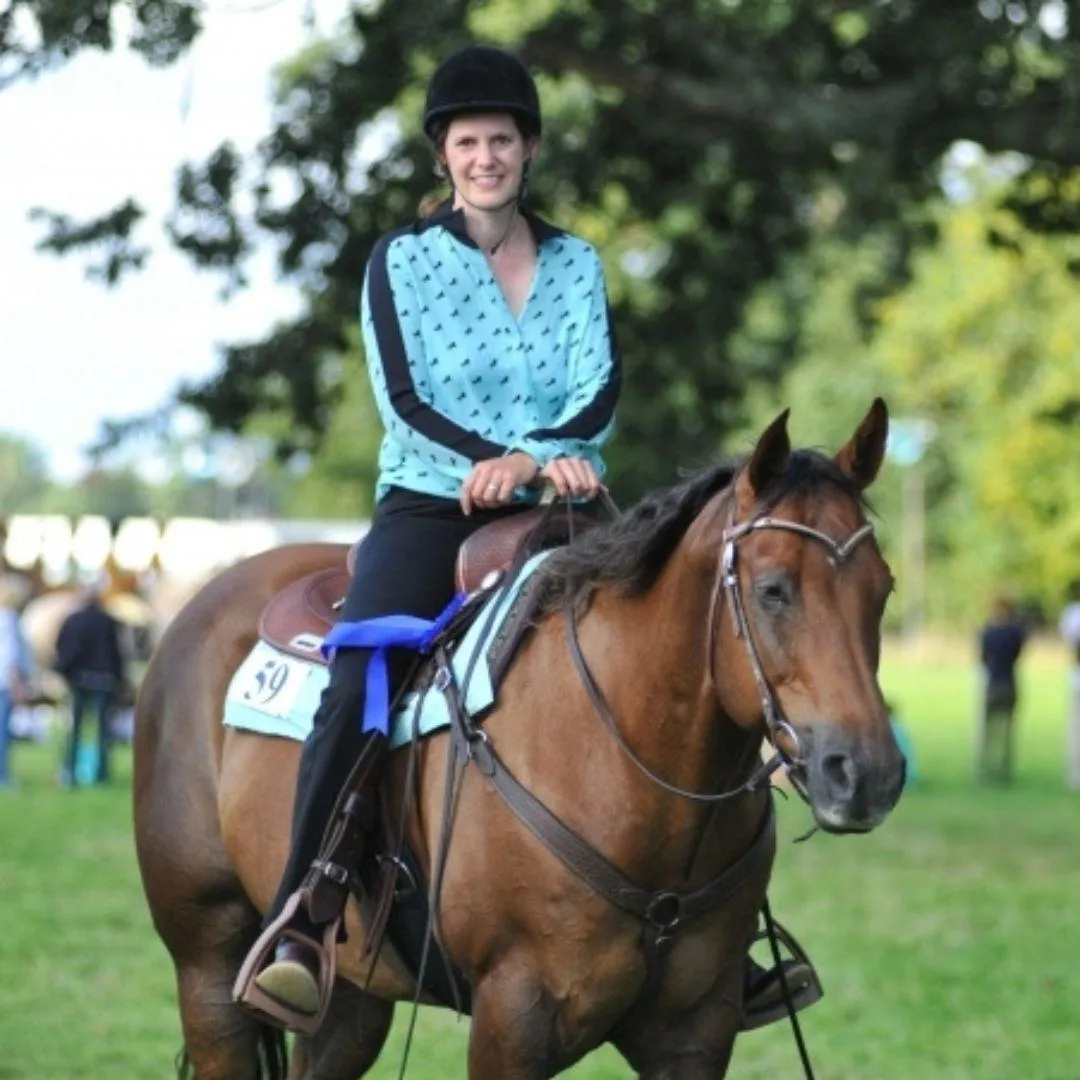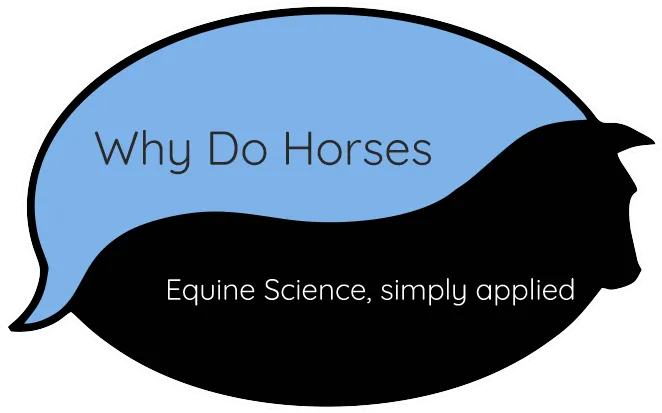Love Reading?
Articles
Find our blog posts and media articles all in one place!

Can Horses Be Naughty?
Equestrians often report that horses can play up or be difficult to handle. Whilst, anecdotally, handlers remark that horses are being naughty, leading equine behaviour research suggests otherwise. So, can horses truly be naughty or is there another explanation?
Horses display a wide range of behaviours as part of their normal behavioural repertoire. Domestic horses often have a limited range of behaviours due to the confines of the domestic environment. Inability to practice the full range of behaviours can often lead to horses displaying unwanted behaviours which can be interpreted as the horse being naughty.
The dictionary definition of naughty is ‘guilty of disobedience or misbehaviour’. For a horse to be guilty of disobedience, it must have an understanding of the task or the rules governing the task.
For example, a horse which breaks out of its field when the electric fence is not working is not breaking out to be naughty - it simply has no concept of the rule that it should remain in the field or why. When the electric fence is working, it remains in the field because receiving an electric shock is painful. When the fence is not working properly, the grass that the horse gains access to outside of the field is more rewarding than the grass in its own field, so the horse continues to escape from the field.

When horses behave in a difficult way, it is sometimes thought that they are 'having someone on' or 'trying to get away with it'. This promotes the idea that the horse might be trying to mislead a person by not carrying out the desired actions. However, the ability to behave in this manner is quite complex. For a horse to be deceptive would require it to perceive a situation not only from its own perspective, but also from the perspective of another individual, seeing how the situation might look from that individual's point of view. It would also require the horse to want to mislead the individual for some reason. This awareness of the thoughts and feelings of others is known as “theory of mind”. The animal or human mind enables a subject to have awareness of the world and their own experiences; it allows them to think and feel in a conscious way.
Whilst research shows there is evidence of elements of theory of mind in some animals, such as apes, dogs and crows, there is no evidence that horses possess this degree of insight.
Whilst theory of mind is a psychological construct, it is relevant to horse training and handling as equestrians often over-estimate a horse's understanding of human goals and intentions.
Recent research findings suggest that equestrians can struggle to interpret behavioural signs of pain and fear, also confounding the ability to correctly attribute the reasons behind a horse’s behaviour.

Researchers from the Equine Behaviour and Training Association (EBTA) carried out a study of 185 participants, looking at the ability of individuals to interpret behavioural signs of the equine emotional state. Participants were asked to watch a collection of videos showing horses engaging in different activities. For the purposes of the study, the videos were deliberately chosen to show horses in a negative emotional state. Participants were asked to select which emotion they thought the horse was experiencing. Responders were given options such as “angry, anxious, conflicted, enjoying it, excited, fearful, frustrated, playful, relaxed, stressed, stubborn, submissive, switched-off or resigned”. The participant’s interpretations were then compared to the responses of behavioural experts, consisting of 6 Equine Behaviourists registered with the Animal Behaviour and Training Council (ABTC).
The study found that participant age and experience level had little effect on their ability to correctly interpret the behavioural signs. Whilst participants were able to correctly recognise negative emotional states in some videos, those showing bridleless riding or natural horsemanship were commonly misinterpreted as positive experiences for these horses. Interestingly, the study found that participants who identified themselves as clicker trainers were more likely to give answers better aligned with those of the expert group, suggesting that clicker trainers may have more of an understanding of horse behaviour than general equestrians.
A concerning finding was that, despite many of the participants identifying distress in horses in the videos, a small number of participants stated that they would be happy for their own horse to be treated in this way.
Dr Catherine Bell, who lead the study, expresses concern that the more subtle signs of equine distress are often missed:
“We have a tendency to measure horses' welfare in terms of how convenient they are to humans. A horse with a back issue is considered 'fine' as long as he doesn't buck. A horse who doesn't object to being kicked and yanked in a riding school is considered 'fine' if he allows children to learn to ride without causing any accidents.
Horses give out fairly subtle behavioural signs when they are not ok - signs like muscular tension, focused ears, triangulated eyes, pinched angular chin. If we ignore those signs - and our research suggests that we commonly miss those signs, so by default we must therefore ignore them - then horses become REALLY not ok and their behaviour escalates to more dangerous behaviours like bucking, rearing, kicking, bolting. The more indicators we miss that horses are not ok, the more they suffer. And if they are performing dangerous behaviours we are more likely to resort to punishment, adding insult to (literal - be it physical or emotional) injury.”
Another issue with using terms like ‘naughty’ to describe a horse’s difficult behaviour is that it is inherently anthropomorphic. Anthropomorphism is the term used to describe when human characteristics are attributed to an animal or object. It is easy to describe a horse as ‘naughty’, ‘stubborn’ or ‘lazy’ as this is how a human might be described in a similar situation. However, using human characteristics to describe horse behaviour can negatively affect their welfare as the true root causes of the behaviour are then often missed. If a horse who throws his head up due to a poorly fitting bridle is continually described as ‘naughty’, then the underlying pain behaviour will continue to be overlooked.

A good mental exercise is to practice avoiding the use of anthropomorphic labels to describe horse behaviour and to start to consider the underlying causes instead. For example, thinking of a slow horse as undermotivated instead of lazy brings with it new perspective in approaches to training.
Further to this, another problem with attributing unwanted behaviour to ‘naughtiness’ is that often it is used to justify harsher training methods such as a punishment based attitude. Unwanted behaviour is commonly rooted in fear. Being tougher, using punishment or exerting more discipline to alleviate undesired behaviours can create more fear causing them to become worse.
Use of punishment can cause suppression of behaviour and lead to the horse becoming 'shut down'. Behaviour suppression can be dangerous as often the original fear has not gone away but is simply no longer being expressed by the horse. A resurgence of the original unwanted behaviour can occur at any time and the response is often worse than it was in the beginning.

When people get angry, they can send mixed messages to horses causing the horse to become confused and anxious. This in turn can lead to difficulty in communication, through sending mixed signals or aids. Applying two conflicting signals at the same time, such as a leg aid for go and a rein aid for stop, can cause the horse to become confused and start to exhibit conflict behaviours such as bucking.
Pain behaviour, particularly in ridden horses, can often be overlooked. Evidence suggests that riders have difficulty in recognising the behavioural signs that ridden horses are in pain. When these problems are attributed to ‘naughtiness’, the pain-related problem is often disregarded, allowing the issue to worsen, negatively affecting the horse’s welfare. To help equestrians identify when horses are in pain, Dr Sue Dyson and a team of equine scientists developed an ethogram of pain behaviour in the ridden horse. An ethogram is a catalogue of all of the different types of behaviours exhibited by an animal when observed. The study looked specifically at detecting lameness in ridden horses through making behavioural observations.
During the study, researchers used behavioural markers to assess signs of pain resulting from lameness. The behavioural markers consisted of “facial markers”, “body markers” and “gait markers”. These behavioural markers included things such as eye expression and tail carriage. A lameness clinician examined the behaviour of 13 lame horses, as well as watching video recordings of them during ridden exercise. To assess the non-lame horses, video observations were scored with a lameness grade by a Royal College of Veterinary Surgeons Specialist in Equine Orthopaedics. Using the behavioural markers, the team were able to differentiate between lame horses and non-lame horses. The team identified 24 different behaviours indicative of pain. The most commonly witnessed behaviours were:
Hind limbs not following the tracks of the forelimbs
Repeated changes in position of the head
Head too high or behind the vertical for more than 10 seconds
One or both ears rotated back or flat for more than 5 seconds or repeatedly laid flat
Exposure of the tongue or movement in/out
Repeated leg changes in canter, being disunited, crooked or striking off on the wrong leg
Sclera (white of the eye) being exposed
An intense stare for 5 seconds
Bucking or kicking backwards
Rearing
Frequency of trot steps less than 35/15 seconds or a passage-like trot
The bit pulled out of the mouth on one side
Where 8 or more of the ethogram behaviours were observed, the scientists found this was consistent with the presence of lameness. Dr Andrea Ellis, who was part of the research team, explains that identifying the cause of pain behaviour is not always completely straight forward:
“Although the data shows a clear link between a combined occurrence of some of these behaviours (around 7-8 of the ethogram within a short period of exercise) and musculoskeletal pain, we cannot rule out that other pain, discomfort (caused by tack, riding style, stomach ulcers) or even 'a negative emotional state' (often caused by the former) of an animal, also leads to some of these behavioural expressions. This opens the door for horse owners to dismiss the signs overall, however, when they are properly trained in reading the signs (many good and experienced riders and trainers do this 'subconsciously' to an extent - while others focus more on short term performance gain) they should act upon them. This means finding the cause and eliminating it.“

Dr Ellis feels that the labels given to some horses and certain attitudes may disadvantage these horses and cause particular problems to be overlooked:
“Perhaps there is even a bias towards some horses, where signs, for example in mares, will be ignored and written off as 'moody mare' effects or where a horse with such signs is seen as 'difficult' or of less 'trainable' character. The old fashioned 'work him through it' comes to mind.
So every rider and trainer has a responsibility to learn about these behavioural indicators and try and eliminate them through eliminating their source. This is of course difficult without specific training, as even low levels of lameness are often not seen or ignored. Combining this with behaviour indicators may be a way forward.”
Following the study, the team were able to use the research to develop a practical tool for equestrians in the form of videos explaining common problems which are rooted in pain and also detailing how the ethogram was developed. A 12-part course has since been developed to train equestrians to recognise the behavioural signs of pain in ridden horses which were identified during the study.
Take Home Message
True naughtiness is complex and is beyond the cognitive capacity of horses. Whilst it is tempting to use anthropomorphic labels, such as ‘stubborn’, ‘lazy’ or ‘naughty’, to describe horses, these labels can lead to the root causes of issues to be overlooked. Instead, try to think about the underlying behaviour which might be causing the issue. Behaviour signs of stress and pain are commonly misinterpreted, so learning about these signs is important.
Instead of focusing on punishment based approaches, try to take a compassionate approach which promotes the horse-human relationship. If you are experiencing problems with difficult behaviour, consult your Vet to rule out any underlying physiological causes. If the issue is diagnosed as a behavioural issue, you may be referred to a Horse Behaviourist to resolve the problem. You can find details of qualified and registered Horse Behaviourists on the Animal Behaviour and Training Council website: www.abtc.org.uk

Blog Posts Straight to Your Inbox!
What do clients say?

Amy D

We had an intro session on clicker training with Louise, it was fabulous, very informative. After reading up about clicker training and getting a bit confused with all the different approaches, Louise made it very clear and explained it all thoroughly.

Eiddwen S

I contacted Why Do Horses for help with issues I was having travelling my horse. During our sessions I found myself wanting to learn more about equine behaviour and body language and I have realised I was missing a lot of knowledge. Why Do Horses have changed my entire outlook on horse training and behaviour, this is something for which I will be forever grateful!


